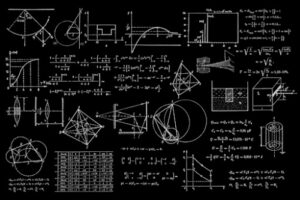March 14th, or 3/14, marks Pi day, a day to celebrate everyone’s favorite irrational number! But there’s way more to this infinite string of digits than just calculating circumferences.Therefore, this March 14th, let’s all take a moment to recognize why this number has become so astronomically famous. Here are some fun facts about Pi that will hopefully inspire you to celebrate the number properly!

- In 2005, Lu Chao from China made headlines when he memorized 67,890 digits of Pi. Believe it or not, the record has been steadily increasing since then. In fact in 2015 Rajveer Meena successfully recited 70,000 digits! Although this is the officially recognized world record, some others claim to have beaten it. They even claimed to have shattered this record. In 2006, Japanese memory master Akira Haraguchi succeeded in memorizing and reciting a total of 100,000 digits of Pi! It took him more than 16 hours to recite every digit. As of 2015, he has increased the number of digits memorized to 111,700 digits! Unfortunately, Haraguchi’s record is not officially recognized by Guinness as the world record, so the official number still stands at 70,000 (The Guardian)
- Pi is an irrational number, so it has an infinite number of digits arranged in no discernible pattern. But mathematicians have been able to calculate over 62.8 trillion digits (Popular Mechanics)! To put that into perspective, if you counted one number every second, it would take you more than two million years to count all 62.8 trillion digits!
- The first ever Pi day was celebrated in 1988 at a San Francisco science museum. Physicist Larry Shaw, who worked at the museum, chose the date March 14th because the day written numerically is 3/14, alluding to the first three digits of Pi. Pi day then became an official holiday. However, it was official in 2009 when the U.S. House of Representatives passed the necessary legislation to declare it a holiday (History).
- In the late 1800’s, an amateur mathematician named Edward J. Goodwin almost had the numerical value for Pi changed to 3.2. He rounded Pi up in order to solve an ancient mathematical problem known as “squaring the circle.” To put it simply, mathematicians wanted to know if a square could be created with the same area as a circle. Goodwin used the value of 3.2 in place of Pi to create his solution to the problem. He then went on to get an Indiana State Representative to introduce a bill in congress which would solidify the value of Pi as 3.2. The bill only died after a math professor from Purdue University, Clarence Waldo, managed to get a glimpse at the bill and realize Goodwin’s mathematical error. And that is why we don’t celebrate Pi day on March 2nd (Reader’s Digest)
- Though the concept of Pi has been around for a millenia, it wasn’t until 1706 when the Greek symbol π was used to represent the value. The symbol was first used for this purpose by William Jones in 1706 and was popularized by Leonhard Euler in the 1730’s (Exploratorium).
There’s more to Pi than meets the eye, so this Pi day, bake yourself a pie and celebrate in style!

Written by: Matthew Jenkins
March 9, 2022
Sources:
https://www.exploratorium.edu/pi/history-of-pi
https://www.history.com/news/where-did-pi-day-come-from
https://www.rd.com/article/pi-day-was-almost-changed-to-3-2/

